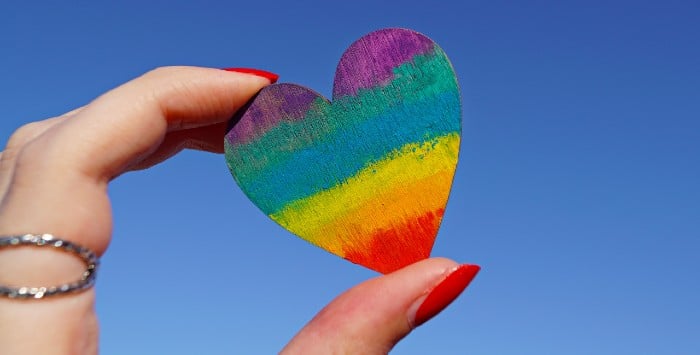
Everyone deserves to feel safe, included and respected. But those with experience working with LGBTQ youth know all too well how often youth identifying as lesbian, gay, bisexual, transgender and queer or questioning are stereotyped, overlooked, or otherwise let down by those they should be able to trust.
To ensure that you’re giving the youth in your care the quality support, resources, and shoulder to lean on that they deserve, the team at Teen Health Mississippi has compiled a few tips for supporting and working with LGBTQ youth that are proven to lead to better outcomes for youth.
Tips for Working with LGBTQ Youth
By following the following tips and guidelines, you can create a safe and supportive environment for all of the youth that you work with.
Use inclusive language
Using inclusive language in both documentation and conversation is one easy way to respect and acknowledge the identity of people who identify as LQBTQ or who are questioning their identity. For example, ask for their preferred gender pronouns before using pronouns that may be incorrect.
Along those lines, don’t be afraid to speak up when you hear others using problematic language, whether by other youth that you work with, colleagues or someone else.
Examine your biases and stay informed
We all have biases. And, when it comes to topics on LGBTQ youth and gender identity, there is a good deal of misinformation and (perhaps unintentional) biases floating around. Read about the concepts of sexual orientation and gender identity in greater detail, understanding that each one can be a spectrum and unique to the individual.
To stay informed, rely on trusted sources of information and trainings, like the Teen Health Mississippi LGBTQ 101 training.
Respect confidentiality
It’s not your job to “out” anyone. If a young person identifies as LGBTQ and trusts you enough to share this information about themselves with you, that information should be kept confidential.
It’s also not your responsibility to try to guess which young people that you serve identify as LGBTQ. Don’t let stereotypes or unintentional biases color the work or care that you provide—no matter how well intended they may be.
Don’t rush the process
Simply listening is often the first step to gaining someone’s trust. Allow them to express any emotions they may be feeling or thoughts that may be confusing to them.
Some people who are LGBTQ may be ready to come out right away, while others take time to work through their feelings, gain confidence and feel comfortable in their community. Everyone’s coming out process and timeline is different.
Show your support outwardly
Aside from the language that you use, you can show your support in your workplace to help LGBTQ youth feel safe and included. This might mean displaying flags, messages or images that show support for the LGBTQ community, or including books and magazines that promote acceptance in waiting areas. Another way to outwardly show support is to share resources, like LGBTQ-friendly healthcare providers, community organizations, or help lines, that are geared toward supporting the needs of the LGBTQ community.
Provide access to unbiased resources and services
When someone who identifies as LGBTQ comes to you for help or support, knowing about resources and services that can help and how to access those resources and services can be invaluable. Start compiling a list of helpful resources, LGBTQ+ helplines and referral agencies or counselors in your area.
The societal bias against those who identify as LGBTQ can also contribute to mental health challenges, like anxiety, depression or substance use. It’s important to recognize this and be prepared to help the youth that you work with find and access the appropriate and unbiased treatment or services.
Trainings for Trusted Adults
Professional development in the form of trainings is one way to stay up to date on the ever-evolving world of youth support.
LGBTQ Training Series
Teen Health Mississippi’s LGBTQ Training Series is a three-part series that equips service providers and those working with LGBTQ youth with the knowledge, skills, and resources needed to meet the unique needs of the youth that they serve.
The first training in the series, LGBTQ 101: Getting the Basics, inclues a review of LGBTQ health statistics, a discussion on the challenges and opportunities to working with LGBTQ youth, and a discussion on values related to working with LGBTQ youth.
And, while not geared specifically toward LGBTQ youth, our trainings for askable adults may also be helpful in your day-to-day work with youth. Check out our calendar of trainings and events to see what other trainings are coming up or to request a custom training for your workplace.